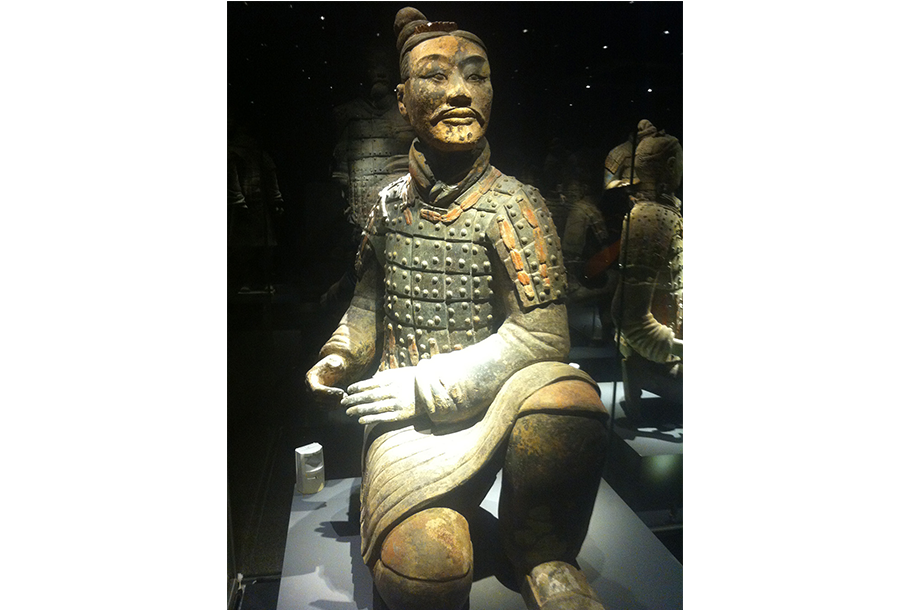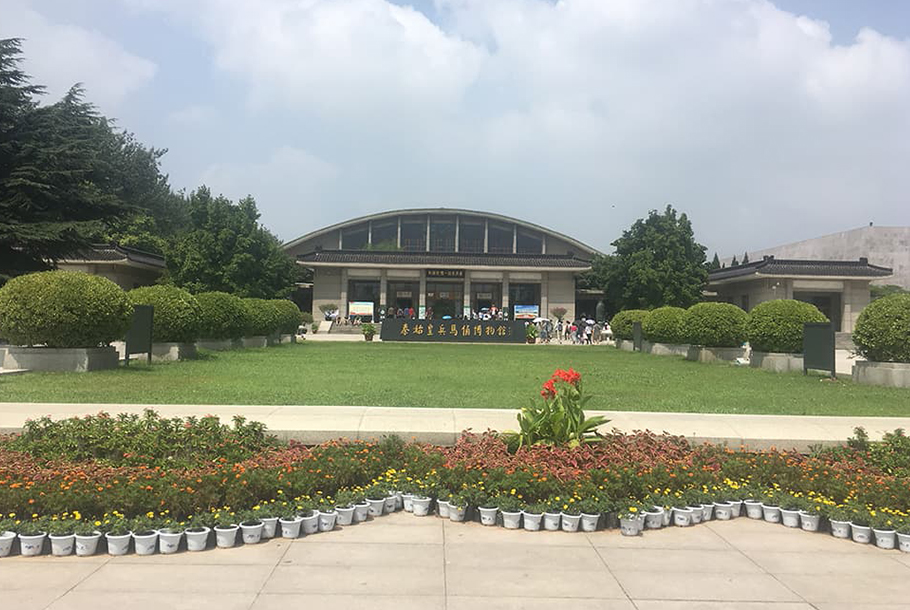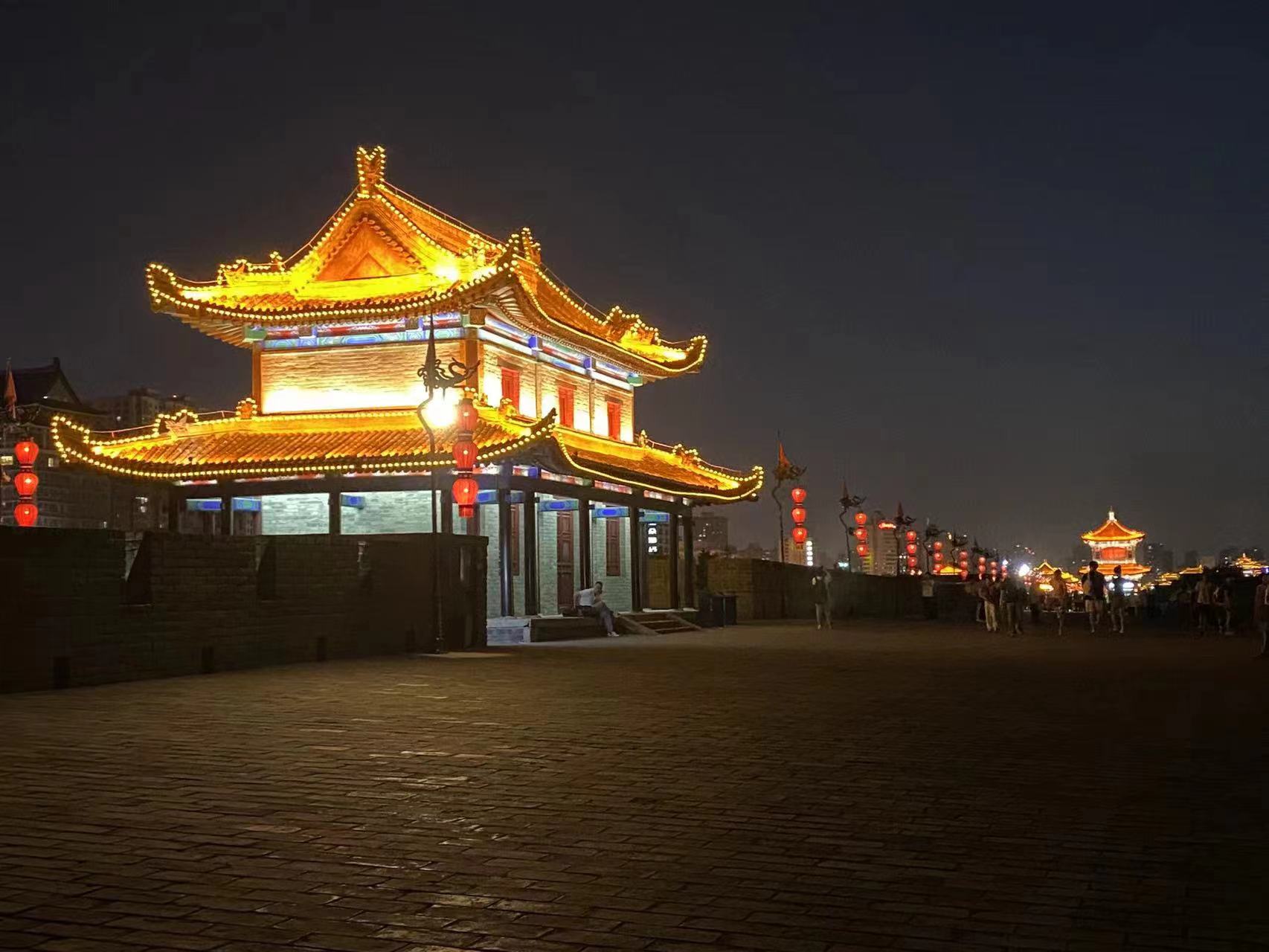
Xi'an, formerly known as Chang'an, is the capital of Shaanxi Province and the largest city in northwest China. With a rich and lengthy history, Xi'an is often referred to in ancient sayings as the “home of China of 2000 years ago." Twelve dynasties, including the Western Zhou (1046 BC-771 BC), Qin (221 BC-206 BC), Western Han (206 BC-25 AD), and Tang (618-907) have made their capitals in Xi'an, with over 1,100 years of history leaving the city with abundant legacies. During the Western Han and Tang dynasties, Xi'an was a crucial political, economic, cultural, and diplomatic center where people from all over the world lived in harmony. It was also the starting point of the Silk Road, connecting the eastern and western civilizations. The saying "In the west, there is Rome, in the east, Chang'an," exemplifies the city's importance at that time. Nowadays, Xi'an is renowned as one of the four major capitals of ancient civilization, alongside Athens, Cairo, and Rome.
Xi'an is home to more than 4,000 historical sites, including over 120,000 pieces of unearthed cultural relics. Of these sites, 314 are under protection, with 84 at the provincial and national level. Visitors to Xi'an can explore a vast array of historical, cultural, and architectural landmarks, from the iconic Terracotta Army to the city's ancient fortifications, including the largest standing city walls in the world. Additionally, visitors can sample local specialties such as Roujiamo (a type of Chinese hamburger) and Biang Biang noodles. Overall, Xi'an offers a unique and breathtaking glimpse into China's rich cultural heritage.




The Terracotta Army figures lie underground for more than 2000 years. In 1974, farmers digging a well uncovered one of the greatest archaeological sites in the world. Excavation of the underground vaults of earth and timber revealed thousands of life - sized Terracotta Army in battle formation - a whole army which would accompany its emperor into immortality. Standing in the exhibition hall, one would be shocked by such a grand ancient army formation, which will lead you back to the ancient warring situation.
The horsemen, the longbow bearers, the archers, the senior officers and generals were positioned in strict accordance with the ancient directives on the art of war. Many of the figures originally held real weapons of the time, such as bronze swords, longbows, arrowheads, spears, dagger-axes and other long-shaft weapons. Surface treatment of the weapons made them resistant to rust and corrosion so that after being buried for over 2000 years they were still sharp.
The Terracotta Army figures excavation was regarded as one of the greatest discovery in the 20th century. In Dec. 1987, the UNESCO ranked the Tomb of the First Emperor (including the Terracotta Army Vaults) into the list of World Cultural Heritages.
The museum mainly consists of three vaults: Terracotta Army Pit No 1. Terracotta Army Pit No 2. Terracotta Army Pit No 3 and an Exhibition of the Bronze Chariot.


Standing in the Da cien Temple of a southern suburb of Xian, the Big Wild Goose Pagoda is one of the most famous Chinese ancient structures and has been viewed as the landmark of Xian.
Originally built in 652 AD during the reign of Emperor Gaozong of Tang Dynasty (618-907 AD), it functioned to collect Buddhist materials that were taken from India by the hierarch Xuanzang. Xuanzang started off from Changan (the ancient Xian), along the Silk Road and through deserts, finally arriving in India, the cradle of Buddhism. During 17 years of traversing 100 countries, he obtained Buddha figures, 657 kinds of sutras, and several Buddha relics. Having got permission from Emperor Gaozong (628-683), Xuanzang, as the first abbot of Da Cien Temple, supervised the building of a pagoda inside it. With the support of royalty, he asked 50 hierarchs into the temple to translate Sanskrit sutras into Chinese, totaling 1,335 volumes, which heralded a new era in the history of translation. Based on the journey to India, he also wrote a book entitled "Pilgrimage to the West", which provides plenty of valuable materials for studying the history and society of India at that time. The pagoda was thus named because the architectural style was imported from the wild goose pagoda of India. To distinguish the smaller pagoda of the same architecture built later in the Jianfu Temple of Changan (the ancient name of Xian), people called it the Big Wild Goose Pagoda.


Due to its location in Huajue Alley, northwest of the Drum Tower, the mosque is also named the Huajue Alley Mosque. Deemed to be one of the two most significant ancient mosques in the city of Xian (the other is the mosque in Daxuexi Alley), it was ostensibly founded by the naval admiral and Hajji Cheng Ho, the son of a prestigious Muslim family who is famous for clearing the China Sea of pirates and leading the great Ming naval expedition to south and west. Since the fourteenth century, the mosque has undergone numerous reconstructions. Most of the buildings extant today are from the Ming and Qing Dynasties of the seventeenth and eighteenth centuries.
The Great Mosque is the major spot for the religious activities of over 60,000 Moslems in Xian. It is also an important historic monument in Shaanxi Province. Like the Great Mosques at Hangzhou, Quanzhou and Guangzhou,the Great Mosque of Xian is thought to have existed as early as the seventh century. Unlike Arabic mosques which have splendid domes, minarets reaching into the clouds, and colorful engraved sketches with dazzling patterns, Chinese architectural elements were synthesized into the mosques architecture. As a result the mosque resembles a fifteenth century Buddhist temple. The mosque occupies a narrow lot about 48 meters by 248 meters, and the precinct walls enclose a total area of 12,000 square meters. Unlike many other Chinese mosques, it has the layout of a Chinese temple: successive courtyards on a single axis with pavilions and pagodas adapted to suit Islamic functions. Unlike a typical Buddhist temple, the grand axis of the Great Mosque of Xian is aligned from east to west, facing Mecca. Five successive courtyards, each with a signature pavilion, screen, or freestanding gateway, lead to the prayer hall located at the western end of the axis.
Although the great mosque possesses plenty of traditional Chinese architectural features, the inner decoration is strictly in accordance with Islamic requirements. Writings in the hall are all in Arabic, and only Muslims are allowed to enter the prayer hall. The great mosque is viewed as a significant combination of Chinese and Islamic architectural arts. It has been classified a key national historical unit by the State Council of China, and listed by UNESCO as an important international Islamic cultural relic.









The first landmark visitors will encounter in Xian is the ancient city wall, which stretches round the old city. The northern side runs parallel to the railway. Xian was originally a walled city, and even today the wall is considered a landmark dividing the city into the inner part and the outer part. The city wall is massive - tall, long and thick. The South Gate and North Gate are the two main entrances to the inner city. The city itself is neatly arranged along the city wall.
Xian City Wall was erected in the 14th century Ming Dynasty, under the regime of Emperor Zhu Yuanzhang. When Zhu Yuanzhang captured Huizhou, long before the establishment of the Ming Dynasty, he was admonished by a hermit named Zhu Sheng, who told him to "build high walls, store abundant provisions and take your time in proclaiming yourself emperor." This advice Zhu Yuanzhang heeded. Once the whole country was unified, he sent orders to the local governments to build city walls on a large scale. Zhu assured that "out of all the mountains and rivers in the world, the area of Central Qin is the most strongly fortified and strategically impregnable." The current city wall is an enhancement of the old Tang Dynasty structure, as a result of the emperors wall building campaign.



The Bell Tower of Xian, built in 1384 during the early Ming Dynasty, is a symbol of the city of Xian and one of the grandest of its kind in China. The Bell Tower also contains several large bronze-cast bells from the Tang Dynasty. The tower base is square and it covers an area of 1,377 square meters. The tower is a brick and timber structure and close to 40 meters high.
The Drum Tower of Xian, located in the heart of Xian in Shaanxi province of China, along with the Bell Tower it is also a symbol of the city. Erected in 1380 during the early Ming Dynasty, it stands towering above the city center and offers incredible view of Xian.
The Drum Tower got its name from the huge drum located within the building. In contrast to the Bell Tower, where bell was stricken at dawn, drum was beat at sunset to indicate the end of the day.


Chinese dumplings, in Chinese called Jiaozi, with meat and vegetable fillings, is a traditional Chinese food with around 2,000-year history. A Dumpling Banquet serves most tasty and delicate of dumplings with a variety of materials and shapes.

The show represents the palace singing and dancing in the Tang Dynasty (618–907), when Xian was the capital of China. The Tang Dynasty is regarded as the most progressive and prosperous era in the days of Imperial China and its music and dance symbolize the glory and beauty of Chinese civilization.
Never miss an update from us. Sign up for our newsletter and stay informed about our latest news, products, and promotions.
2014-2024 © Copyright Charmission, All rights reserved.京ICP备19015279号-2



